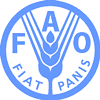 |
|||||||||
|
|||||||||||||||||||
|
|
Food Prices Up Again 2009-12-09 Global food prices are on the ascent again with the FAO Food Price Index – a food basket composed of cereals, oilseeds, dairy, meat and sugar – registering four straight monthly rises.
However market conditions are different from those that triggered the food price crisis that started two years ago, FAO said in its December Food Outlook report published today. “At the onset of the price surge in 2007, FAO identified a number of possible causes contributing to the price rise: low levels of world cereal stocks; crop failures in major exporting countries; rapidly growing demand for agricultural commodities for biofuels and rising oil prices,” the FAO report said. “As the price strengthening accelerated, several other factors emerged to reinforce the upheaval; most importantly, government export restrictions, a weakening United States dollar and a growing appetite by speculators and index funds for wider commodity portfolio investments on the back of enormous global excess liquidity. What made the 2007/08 price spike exceptional was the concurrence of so many factors culminating in an unprecedented price rally and the fuelling of volatility.” Cereal stocks healthy Today, world cereal stocks are at more comfortable levels, although some markets are facing tight conditions. In general supplies held by exporters are more adequate to respond to rising demand than they were during the price surge period. For example, the wheat stocks-to-use ratio in major exporting countries has risen from 12 percent to 20 percent this season. Biofuels are still a leading driver but the sector has slowed in terms of year-on-year growth. Macro-economic factors, such as exchange rates, volatile oil prices and low interest rates are also causing investors to put their cash in commodity markets. “Although supply and demand fundamentals will continue to shape commodity markets, the now entrenched susceptibility of the global food system to external non-food economy events requires continuous vigilance,” FAO said. Production rising “A healthy stock situation and good production prospects reduce the risk of a major price surge over the next six months, but FAO will be keeping a very close eye on developments,” said Hafez Ghanem, FAO Assistant Director-General for Social and Economic Development. Although the preliminary outlook for cereals points to a decline in world output compared to 2008, mostly on account of lower price expectations which depressed plantings, production in 2009 is still expected to be about four percent higher than in 2007. Global cassava production is expected to reach new highs in 2009, largely due to initiatives to sustain food security and demand from the ethanol sector where cassava has emerged as a key feedstock. However prices of internationally traded cassava are still less than they were two years ago but should remain firm in 2010. In the oil seeds market, a weakening in prices for meals and cakes is possible later in the season because of expected large South America crop but the market is expected to be tighter in oils and fats. World sugar prices are likely to remain firm but at lower levels than the current highs. Meat down, dairy and fish up According to the FAO meat price index, world meat prices were an average 8 percent lower in the first ten months of 2009 than the same period last year. Lower global imports are expected to depress world trade in all various meat categories in 2009 but a modest recovery is expected in 2010. Dairy prices are on the rise again, gaining by 80 percent since reaching a low in February 2009, with traded milk powders the fastest rising product. Future prices will depend on whether the European Union offloads its large stocks of butter and skimmed milk onto the international market. 2009 was a challenging year for fish and fishery products because of the global downturn that hit demand. There have been moderate price increases for several months now.
|
||||||||||||||||||

|
|
||||||||||||||||||
| home | agri-services | pedigree
pen | news | dairy | beef | machinery property | organisations | site map |
|||||||||||||||||||

